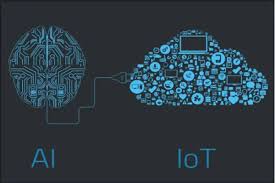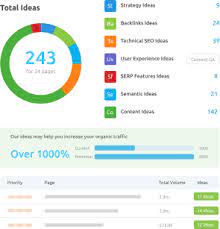AI and Data Analytics: Transforming the Future of Business
In today’s rapidly evolving digital landscape, Artificial Intelligence (AI) and data analytics have emerged as pivotal tools that are reshaping industries across the globe. From enhancing customer experiences to optimising operational efficiency, these technologies are driving significant advancements and offering unprecedented opportunities for businesses of all sizes.
The Role of AI in Data Analytics
AI is revolutionising data analytics by automating complex processes and providing insights that were previously unattainable. Traditional data analysis methods often involve manual sorting and interpretation, which can be time-consuming and prone to human error. AI algorithms, however, can process vast amounts of data quickly and accurately, identifying patterns and trends that might otherwise go unnoticed.
Machine learning, a subset of AI, plays a critical role in this transformation. By learning from historical data, machine learning models can predict future outcomes with remarkable accuracy. This capability allows businesses to make informed decisions based on predictive analytics rather than relying solely on past performance.
Applications Across Industries
The integration of AI into data analytics is having a profound impact across various sectors:
- Retail: AI-driven analytics help retailers personalise customer experiences by analysing purchasing behaviour and preferences. This leads to targeted marketing strategies that increase sales and customer loyalty.
- Healthcare: In the healthcare industry, AI aids in diagnosing diseases by analysing medical images and patient records more efficiently than traditional methods.
- Finance: Financial institutions leverage AI for fraud detection by recognising unusual patterns in transaction data that may indicate fraudulent activity.
- Manufacturing: Predictive maintenance powered by AI helps manufacturers identify potential equipment failures before they occur, reducing downtime and maintenance costs.
The Benefits of Combining AI with Data Analytics
The synergy between AI and data analytics offers numerous benefits:
- Enhanced Decision-Making: Businesses can make more informed decisions based on comprehensive insights derived from data analysis.
- Increased Efficiency: Automating routine tasks with AI frees up valuable human resources for more strategic activities.
- Improved Accuracy: By minimising human error in data interpretation, businesses achieve higher accuracy in their analyses.
- Competitive Advantage: Companies that harness the power of AI-driven analytics gain a competitive edge by staying ahead of market trends and customer demands.
The Future Outlook
The future of business is intertwined with the continued evolution of AI and data analytics. As technology advances, we can expect even more sophisticated tools that offer deeper insights and greater automation capabilities. Businesses that embrace these innovations will be well-positioned to thrive in an increasingly competitive environment.
The integration of AI into data analytics is not just a trend; it is a fundamental shift that is transforming how organisations operate. By leveraging these powerful technologies, companies can unlock new levels of efficiency, innovation, and growth.
Conclusion
The combination of AI and data analytics represents a transformative force in the modern business world. As organisations continue to explore its potential applications across various domains, those who invest in these technologies will undoubtedly reap substantial rewards. Embracing this change is essential for any business looking to secure its place at the forefront of its industry.
Exploring the Intersection of AI and Data Analytics: Key Insights, Benefits, and Future Trends
- What is Artificial Intelligence (AI) and how does it relate to data analytics?
- How can AI improve data analytics processes in businesses?
- What are the key benefits of using AI in data analytics?
- What industries are leveraging AI and data analytics for business insights?
- What role does machine learning play in enhancing data analysis through AI?
- How can businesses implement AI-driven data analytics solutions effectively?
- What are some common challenges faced when integrating AI into existing data analytics systems?
- What trends can we expect to see in the future of AI and data analytics?
What is Artificial Intelligence (AI) and how does it relate to data analytics?
Artificial Intelligence (AI) refers to the simulation of human intelligence processes by machines, particularly computer systems. These processes include learning, reasoning, problem-solving, perception, and language understanding. AI is closely related to data analytics as it enhances the ability to process and analyse large datasets quickly and accurately. By using sophisticated algorithms and machine learning techniques, AI can identify patterns, trends, and insights that would be difficult or impossible for humans to discern manually. This relationship allows businesses to make data-driven decisions with greater precision and efficiency, ultimately leading to improved outcomes across various sectors. In essence, AI acts as a powerful tool that amplifies the capabilities of data analytics by automating complex analytical tasks and providing deeper insights into data.
How can AI improve data analytics processes in businesses?
AI can significantly enhance data analytics processes in businesses by automating complex tasks, improving accuracy, and providing deeper insights. Through machine learning algorithms, AI can process vast amounts of data much faster than traditional methods, identifying patterns and trends that may not be immediately apparent to human analysts. This capability allows businesses to make more informed decisions based on predictive analytics, rather than relying solely on historical data. Additionally, AI reduces the likelihood of human error in data interpretation and enables real-time analysis, which is crucial for responding swiftly to market changes. By streamlining these processes, AI not only increases efficiency but also empowers businesses to gain a competitive edge by uncovering valuable insights that drive strategic growth.
What are the key benefits of using AI in data analytics?
The key benefits of using AI in data analytics are manifold, transforming how businesses interpret and utilise their data. Firstly, AI enhances decision-making by providing more accurate and comprehensive insights through advanced algorithms that can process vast amounts of data swiftly. This leads to increased efficiency as AI automates routine analytical tasks, freeing up human resources for more strategic initiatives. Additionally, AI improves the accuracy of data analysis by minimising human error and identifying patterns or anomalies that may be overlooked by traditional methods. Furthermore, businesses gain a competitive advantage by leveraging AI-driven analytics to anticipate market trends and customer behaviours, enabling them to stay ahead in a rapidly changing environment. Overall, integrating AI into data analytics empowers organisations to optimise operations, innovate continuously, and achieve sustainable growth.
What industries are leveraging AI and data analytics for business insights?
A wide array of industries are leveraging AI and data analytics to gain valuable business insights and enhance their operations. In the retail sector, companies use these technologies to personalise customer experiences and optimise inventory management. The healthcare industry benefits from AI by improving diagnostic accuracy and streamlining patient care through predictive analytics. Financial institutions employ AI-driven data analytics for fraud detection, risk management, and personalised financial services. Manufacturing businesses utilise these tools for predictive maintenance and quality control, enhancing efficiency and reducing downtime. Additionally, the transportation sector applies AI to improve route optimisation and fleet management. Across all these industries, the integration of AI and data analytics is driving innovation, improving decision-making processes, and providing a competitive edge in the marketplace.
What role does machine learning play in enhancing data analysis through AI?
Machine learning plays a pivotal role in enhancing data analysis through AI by enabling systems to learn from data and improve their performance over time without explicit programming. It allows for the automatic identification of patterns and trends within large datasets, which might be too complex or subtle for traditional analytical methods to detect. By employing algorithms that can adapt to new data, machine learning enhances predictive analytics, providing businesses with more accurate forecasts and insights. This capability not only improves decision-making processes but also allows for the development of personalised experiences and solutions tailored to specific needs. As a result, machine learning is integral to transforming raw data into actionable intelligence, driving innovation and efficiency across various industries.
How can businesses implement AI-driven data analytics solutions effectively?
Implementing AI-driven data analytics solutions effectively requires a strategic approach that encompasses several key steps. Firstly, businesses should clearly define their objectives and identify the specific problems they aim to solve with AI and data analytics. This ensures that the chosen solutions align with their overall goals. Next, investing in the right technology infrastructure is crucial, including robust data management systems and scalable cloud platforms that can handle large datasets. Additionally, organisations should focus on building a skilled team or partnering with experts who have experience in AI and data analytics to guide the implementation process. Ensuring data quality is another critical factor; businesses must establish processes for cleaning and organising their data to maximise the accuracy of insights derived from it. Finally, fostering a culture of continuous learning and adaptation will help organisations stay abreast of technological advancements and refine their strategies over time for sustained success.
What are some common challenges faced when integrating AI into existing data analytics systems?
Integrating AI into existing data analytics systems presents several challenges that organisations must navigate to achieve successful implementation. One of the primary challenges is data quality and availability; AI systems require large volumes of high-quality, structured data to function effectively, and many organisations struggle with data silos and inconsistencies. Additionally, there is often a skills gap within teams, as employees may lack the necessary expertise in AI technologies and advanced analytics. This can lead to difficulties in understanding and managing the integration process. Furthermore, legacy systems can pose compatibility issues, as they may not be designed to support modern AI tools and frameworks. Ensuring data privacy and security is also a significant concern, given the sensitive nature of the information being processed. Finally, aligning AI initiatives with business objectives requires clear communication between technical teams and stakeholders to ensure that the integration delivers tangible value and addresses real business needs.
What trends can we expect to see in the future of AI and data analytics?
In the future of AI and data analytics, several key trends are expected to shape the landscape. One significant trend is the increasing integration of AI with Internet of Things (IoT) devices, enabling real-time data collection and analysis for more informed decision-making. Additionally, advancements in natural language processing (NLP) will enhance the ability to interpret and analyse unstructured data from various sources, such as social media and customer feedback. The rise of explainable AI will also become crucial, as businesses demand transparency in AI-driven insights to build trust and ensure compliance with regulations. Furthermore, edge computing will gain prominence, allowing data processing closer to its source for faster insights and reduced latency. As these trends evolve, they will drive greater personalisation, efficiency, and innovation across industries.






